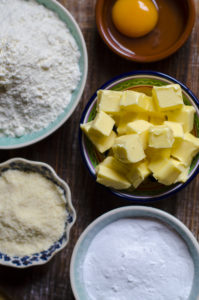
Buttery, Flaky, Melts in your mouth. Can you relate to the yumminess in that? Well then, keep reading.
My first encounter with making pie crust was also my first attempt in making a Lemon Meringue Pie (now one of the most popular recipes on the blog!)
Making your tart crust
This recipe is for a a single (one) crust which is where the only crust is along the bottom of the pan.
If you feel like being fancy, you can decorate the edges by pinching it with your fingers, back of a spoon, knife or any other appliance that can form shapes, folds, waves, or any other decorative pattern. I like to use a wavy sided pan that makes it minimalistic and beautiful. Once I roll out the crust dough, I just set it on top of the pan and press it tightly into the corners to make sure the edges are straights. Then, I press with my hand on top of the sides and the edges are cut in shape.
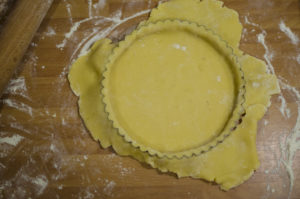
The recipe I am using is a type of Pâte sucrée which is the French term for a sweet short crust pastry used to make tarts. In it’s plain version, it’s made with flour, salt, sugar, egg, butter. I replace some of the flour with ground almonds, which gives it a rich, nutty taste.
It makes a delicious base for chocolate tarts, fruit tarts or cream tarts.
Some quick tips before you start:
- Chill the dough completely when it first comes together, wrapped in plastic wrap (and then chill again when its rolled out in the tart tin)
- After it’s chilled and you’re ready to roll it out, remove the wrap and push on the dough a bit with the rolling pin to flatten it. Let it sit for a few minutes to soften up so you can easily spread it without tearing it up
- Use a little bit of flour under the dough and around the rolling pin when rolling out, keep turning the dough in the flour and dust the top so it doesn’t stick to the bottom or the rolling pin
- Use your rolling pin to roll the dough out and then roll the dough around pin to gently pull it up and place it on top of the tart pan
- If it tears up, don’t panic. You can patch up holes with extra dough, make sure it sticks well and doesn’t have too much flour when patching.
- Use the blind baking method. Blind baking is used when your tart is filled with unbaked fillings, or with fillings that can make it soggy. In this method, you add weights on top of the crust while it’s baking to make sure it doesn’t rise while in the oven. I take a piece of baking paper and wrinkle it up a couple times and then open it and tightening it on top of the chilled dough which is already lined in the pan and straighten it into the corners. Fill it with some dried beans, chickpeas, rice or whatever you have that can act as baking weights. Then you just bake it half way, remove the beans and baking paper and bake it some more to give it a crisp. You’ll get a lovely flaky pie crust, ready to fill.
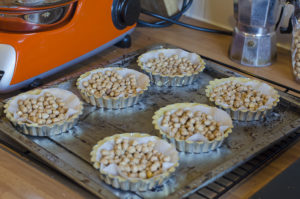
- Feel free replace the ground almonds with any other nut you like
- Work in a cool room, make sure your hands are not too warm and keep the dough cool without over working it, this way you will see chucks of butter in the dough which won’t melt before going into the oven. Therefor, guaranteeing that delicious flakyness I was telling you about. You can see the butter chunks in this picture:
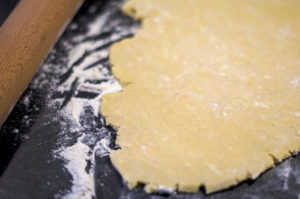
Can be kept in the refrigerator for two to three days before being baked, or freeze it for up to one month. (Thaw overnight in the refrigerator before using).
- 245g (8.6oz) All Purpose Flour
- 40g (1.4oz) Ground Almonds (Almond flour)
- 75g (2.6oz) Powered Sugar
- 170g (6oz) Cold Butter, cut in cubes
- 1 Large Egg
- In a food processor, put together the flour, ground almonds and powdered sugar until fine powder
- Add butter cubes and pulse a couple times, until a chunky, sandy texture (we want small pieces of butter to remain visible)
- Add Egg and pulse a few more times until you see it’s formed into big pieces of soft dough
- Combine the dough together with your hands into a disk and wrap it with saran wrap, do it quickly so the butter doesn’t melt from the warmth of your hands. Place in the fridge for at least 30 min (or up to 3 days)
- Heat oven to 180 C / 356 F
- Flour you surface and roll out your dough to about 3mm thick. Gently pick up the rolled though and line your pie pan with it, pushing the dough into the corners with your thumb.
- Poke the dough with a fork all around the bottom and place it back in the refrigerator for an additional 30 minutes.
- Blind Bake for 15 minutes, remove the pie weights and bake for another 10 minutes.
- Cool completely before filling or removing from the pan
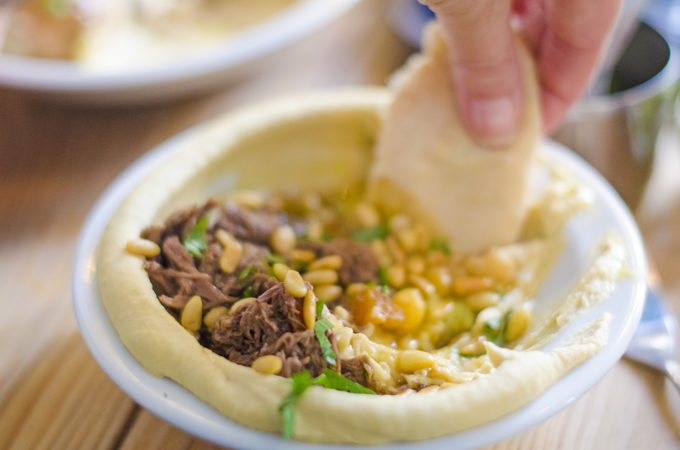
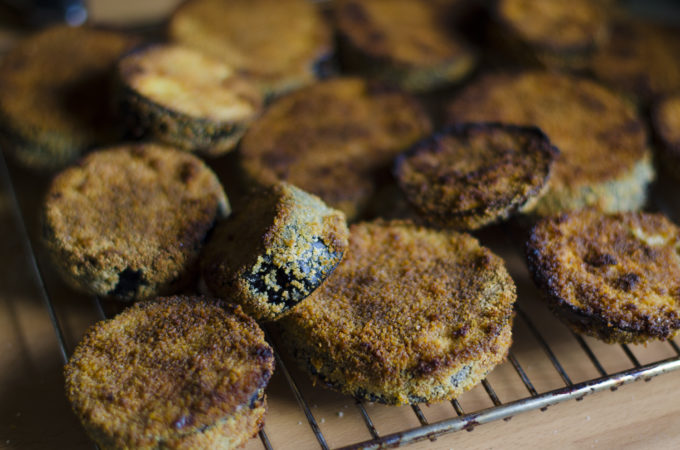
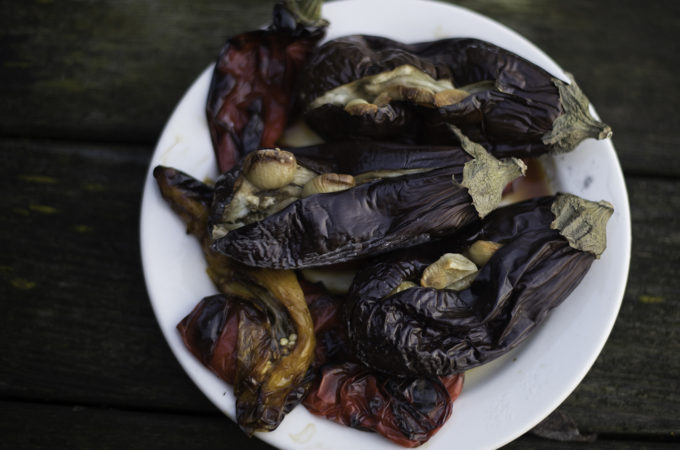
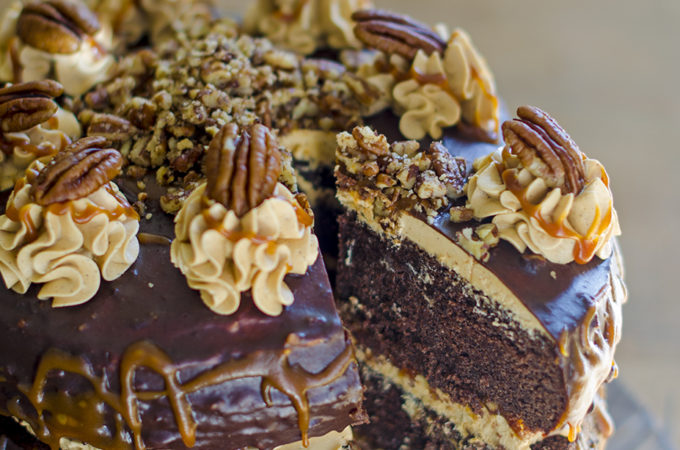
Leave a Reply